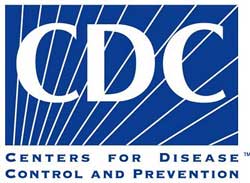Antibiotic resistance in foodborne bacteria continues to be a serious public health threat, according to a new report from the Centers for Disease Control and Prevention (CDC). About 430,000 Americans contract antibiotic-resistant infections from foodborne bacteria every year and resistance in some strains is growing.
 The CDC report is based on data from the National Antimicrobial Resistance Monitoring System (NARMS), a collaborative effort by the CDC, the U.S. Food and Drug Administration (FDA) and the U.S. Deaprtment of Agriculture(USDA), that has tracked antibiotic resistance in humans, retail meats and food animals since 1996. The CDC NARMS report compares resistance levels in human samples in 2012 to a baseline period of 2003-2007.
The CDC report is based on data from the National Antimicrobial Resistance Monitoring System (NARMS), a collaborative effort by the CDC, the U.S. Food and Drug Administration (FDA) and the U.S. Deaprtment of Agriculture(USDA), that has tracked antibiotic resistance in humans, retail meats and food animals since 1996. The CDC NARMS report compares resistance levels in human samples in 2012 to a baseline period of 2003-2007.
While multi-drug resistant Salmonella has decreased over the last 10 years, the bacteria that causes thyphoid fever, Salmonella typhi, increased resistance to quinolone drugs 68 percent in 2012. About 20 percent of Salmonella Heidelberg infections were resistant to ceftriaxone, making the infections harder to treat. Salmonella Heidelberg was the strain that caused the Tyson mechanically separated chicken outbreak earlier this year and both outbreaks linked to Foster Farms chicken.
Other findings from the report included Campylobacter resistance to ciprofloxacin remaining at 25 percent. But Shigella resistance to ciprofloxacin and azithromycin growing.
“Our latest data show some progress in reducing resistance among some germs that make people sick but unfortunately we’re also seeing greater resistance in some pathogens, like certain types of Salmonella,” said Robert Tauxe, M.D., M.P.H, deputy director of CDC’s Division of Foodborne, Waterborne, and Environmental Diseases. “Infections with antibiotic-resistant germs are often more severe. These data will help doctors prescribe treatments that work and to help CDC and our public health partners identify and stop outbreaks caused by resistant germs faster and protect people’s health.”




